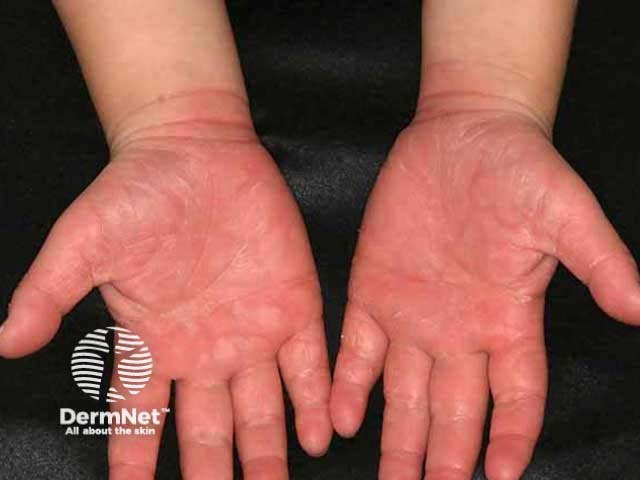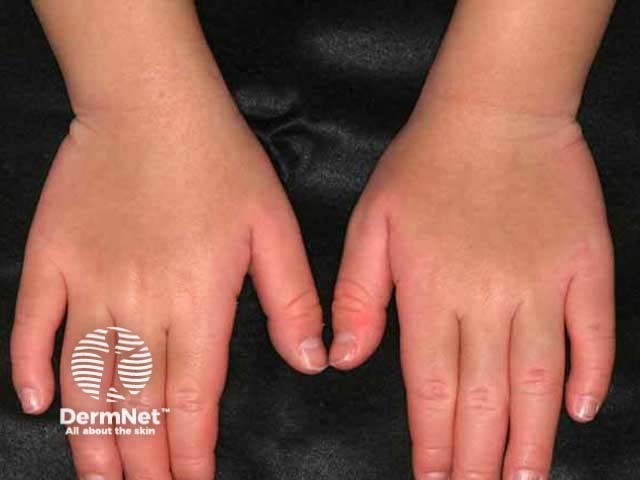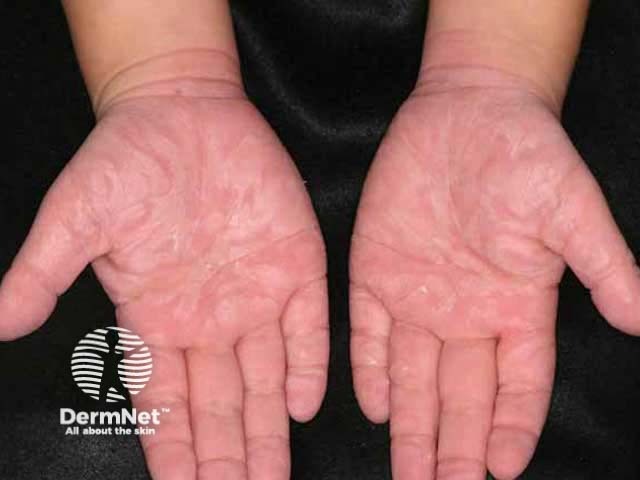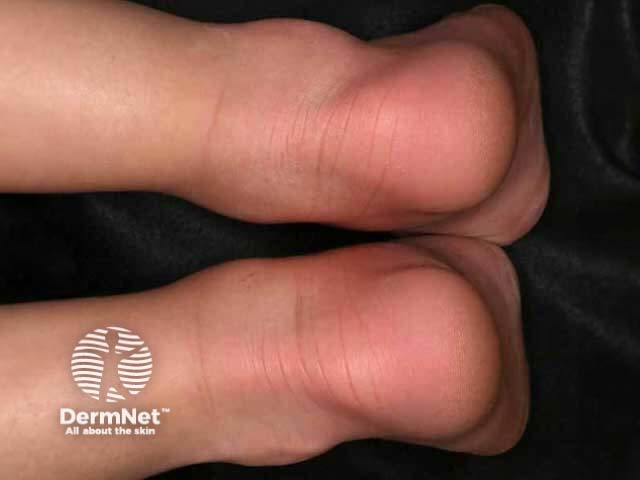Main menu
Common skin conditions

NEWS
Join DermNet PRO
Read more
Quick links
Author: Dr Umi Tahara, Department of Dermatology, Keio University School of Medicine, Tokyo, Japan. Copy edited by Gus Mitchell. December 2020.
Introduction Demographics Causes Clinical features Complications Diagnosis Differential diagnoses Treatment Outcome
Palmoplantar keratoderma Nagashima type (MIM 615598) is a diffuse hereditary palmoplantar keratoderma caused by putative loss-of-function mutations of the SERPINB7 gene, which codes for a protein in the serine protease inhibitor superfamily.
Palmoplantar keratoderma Nagashima type (NPPK) is the most common palmoplantar keratoderma in Asian populations, but is extremely rare in Western countries. The prevalence rates in Japan and China are 1.2 people per 10,000 and 3.1 people per 10,000 respectively. It affects both sexes equally. Onset is in early childhood.
Palmoplantar keratoderma Nagashima type is an autosomal recessive genetic disorder caused by homozygous or compound heterozygous mutations in the SERPINB7 gene on chromosome 18q21. SERPINB7 is expressed in the upper epidermis and encodes a cytoplasmic protein of the serine protease inhibitor superfamily.
Serpin protease inhibitors alter their respective proteases by changing their active site, preventing any further protease activity. Although biallelic loss-of-function mutations in SERPINB7 are considered to induce overactivation of target proteases, the exact molecular mechanisms underlying the pathogenesis of NPPK remain elusive.
Palmoplantar keratoderma Nagashima type presents with well-demarcated diffuse mild thickening and redness of the palms and soles, extending onto the dorsal surfaces of the hands and feet including the Achilles tendon area (transgradient pattern). Involvement of the elbows and knees has been reported. After immersion for 10 minutes in water, lesional skin shows a characteristic white spongy change. Mucous membranes, nails, and hair are not affected.

Palmar thickening and erythema

Extension of changes onto the backs of hands (transgradient pattern)

Whitish change after immersion in water

Thickening and erythema on the soles of feet

Changes extending around the sides of feet (transgradient pattern)

Whitish change after immersion in water

Characteristic thickening and erythema over the Achilles tendon area
Palmoplantar keratoderma Nagashima type is suspected on history and clinical examination.
Skin biopsy shows a non-epidermolytic thickening of the epidermis.
Genetic testing confirms the clinical diagnosis.
Palmoplantar keratoderma Nagashima type should be distinguished from other forms of diffuse hereditary transgradient palmoplantar keratodermas.
As for all forms of palmoplantar keratodermas, treatments aim to soften the skin and minimise complications. Emollients such as urea cream and salicylic acid, topical adapalene, and topical vitamin D3 have been tried with variable success.
There are no specific or curative treatments for NPPK.
Palmoplantar keratoderma Nagashima type does not progress or extend with age.